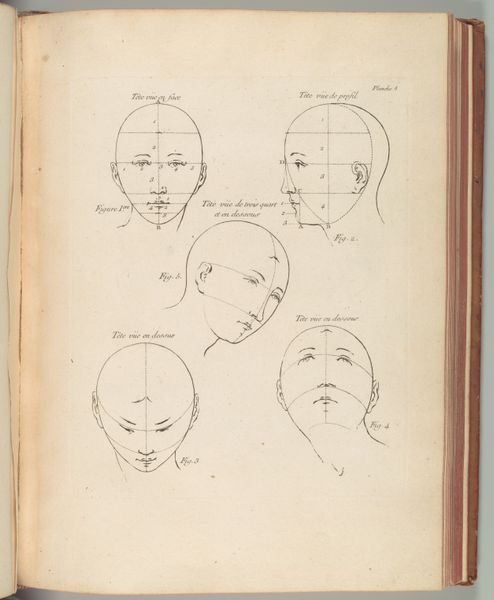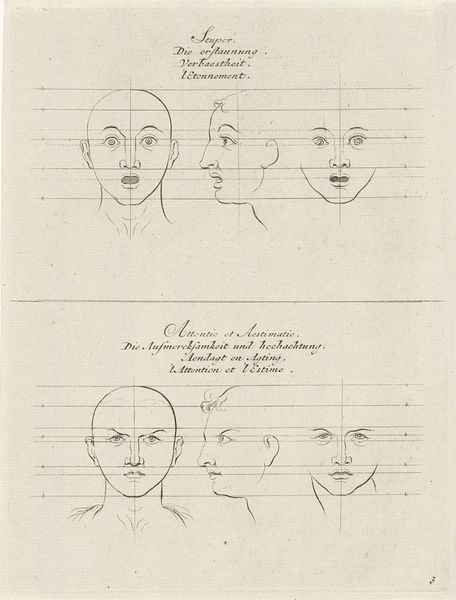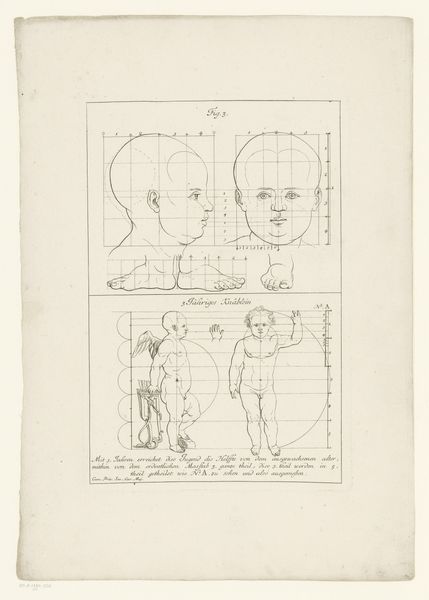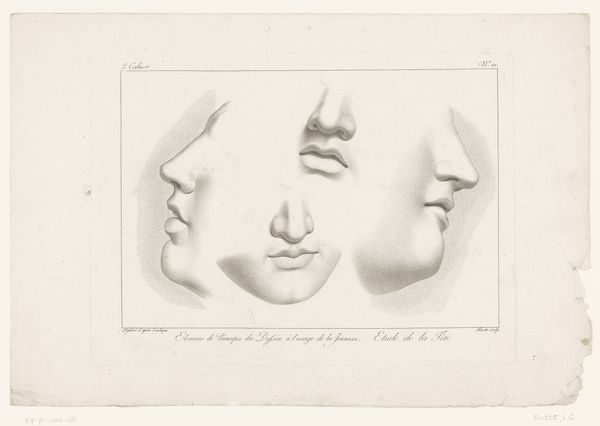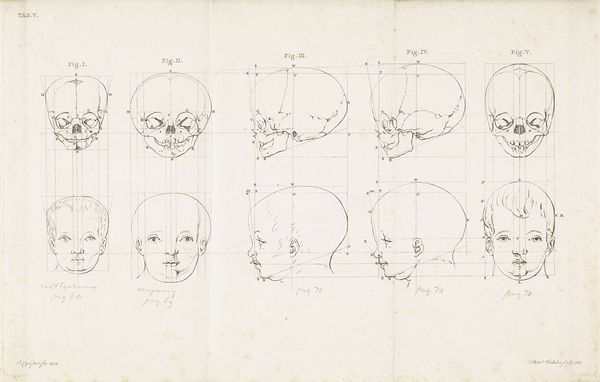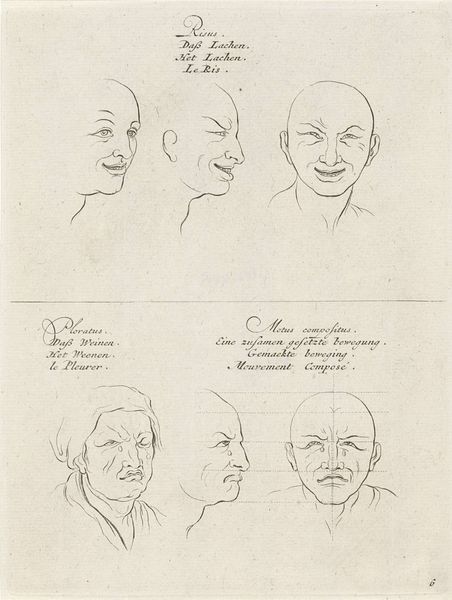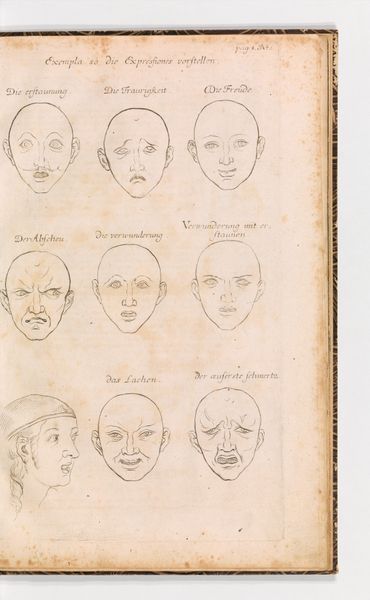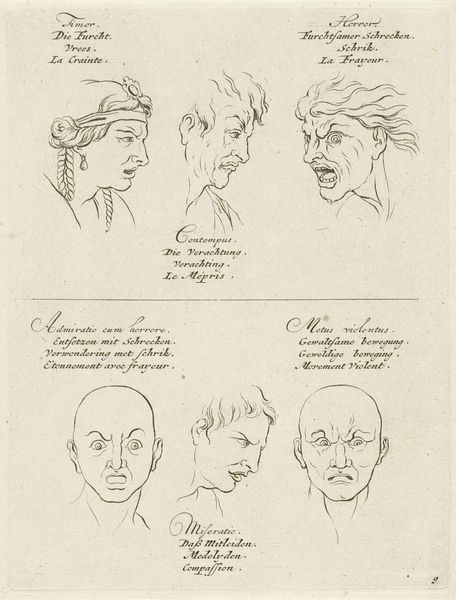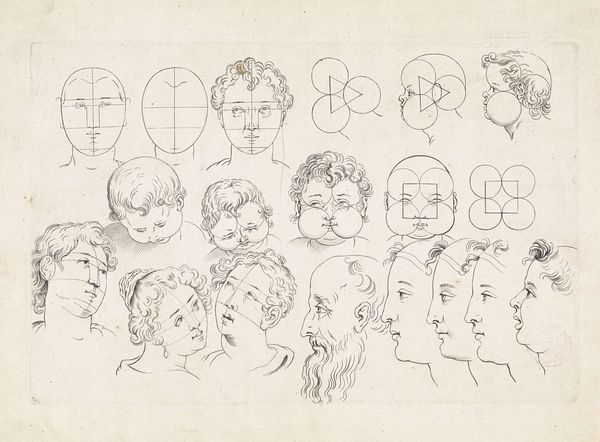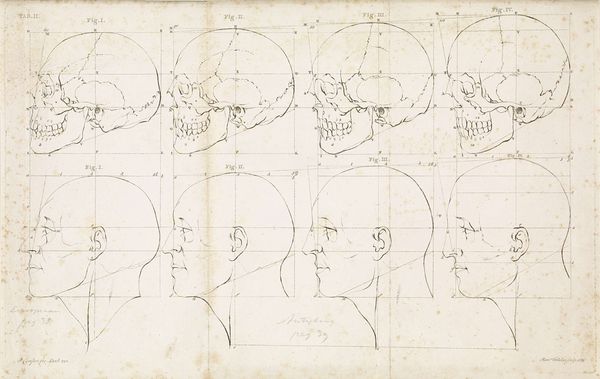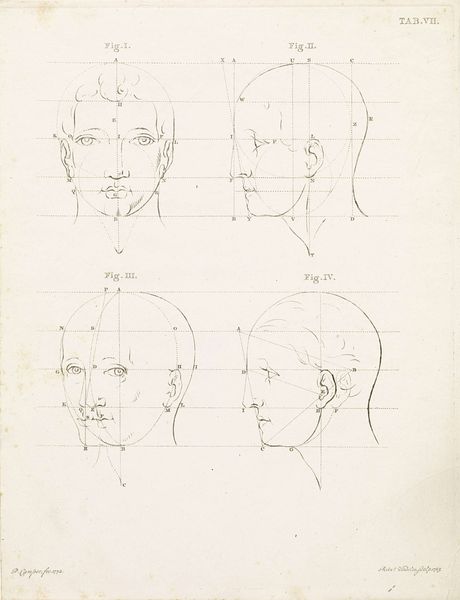
drawing, print, etching
#
portrait
#
drawing
#
face
# print
#
etching
#
caricature
#
line
#
profile
Dimensions: sheet: 5 1/8 x 8 7/16 in. (13 x 21.4 cm)
Copyright: Public Domain
This is Plate III from "Rules for Drawing Caricaturas" by Francis Grose, etched in 1788. It offers a glimpse into the symbolic world of 18th-century caricature, where facial features become potent signifiers. Note the exaggerated expressions, the drooping eyes in the central figure, and the slanted eyes of the one on the right. These distorted features echo throughout history, reminding us of the ancient Greek theatrical masks. These were used to amplify emotions and character traits. The use of such distortions can also be observed in the exaggerated features of the Commedia dell'Arte, where stock characters were defined by their distinctive masks and costumes. Consider the recurring motif of the downcast eyes. This gesture has long symbolized sadness, humility, or even deception. Think of medieval depictions of the Virgin Mary in mourning, her eyes lowered in sorrow. In contrast, consider how the averted gaze can also suggest a lack of sincerity, as seen in depictions of cunning villains throughout art history. These exaggerated features aren't merely surface-level distortions, but rather, they tap into our collective memory, stirring deep-seated emotions and subconscious associations that transcend time.
Comments
No comments
Be the first to comment and join the conversation on the ultimate creative platform.
